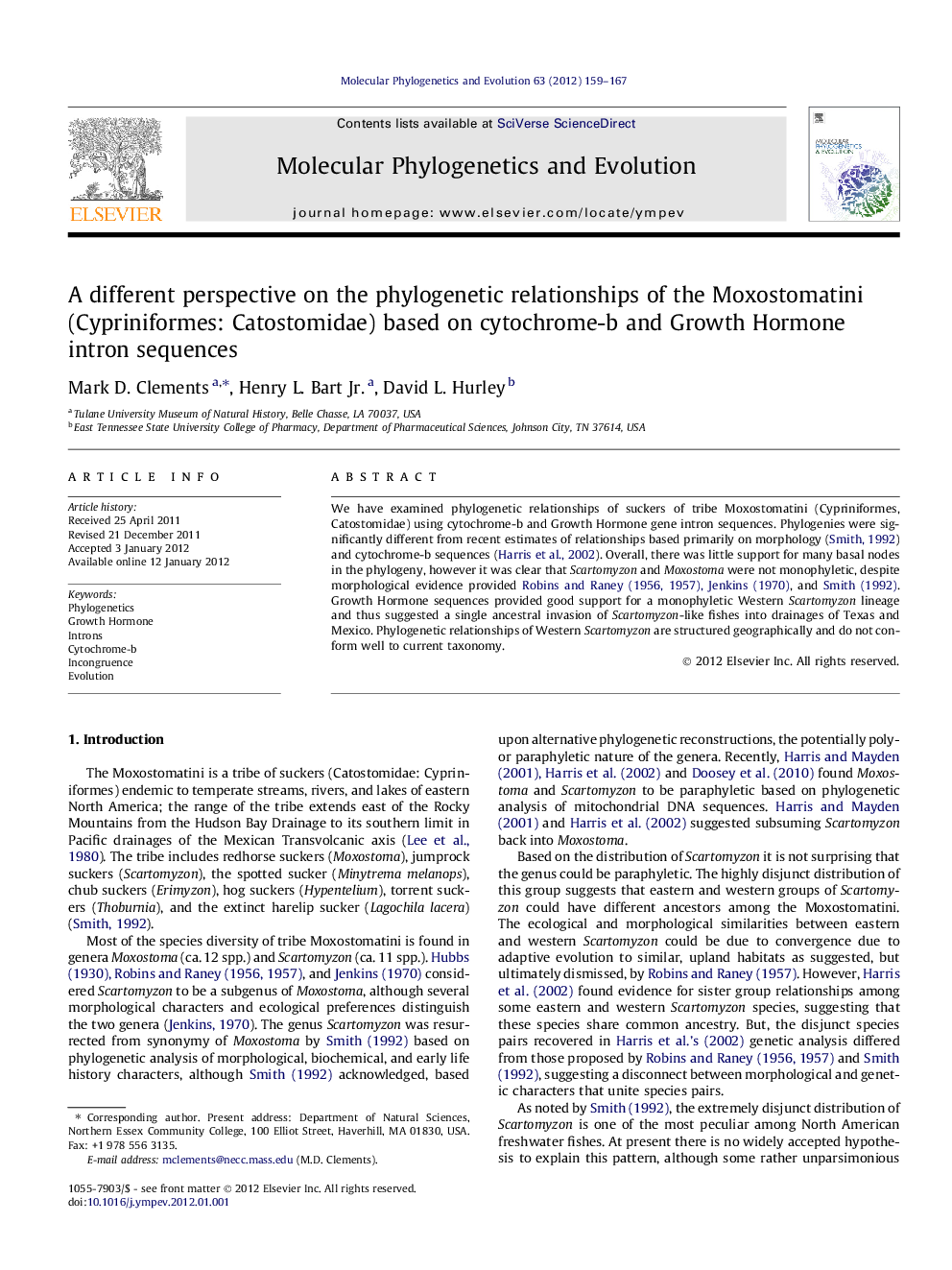| Article ID | Journal | Published Year | Pages | File Type |
|---|---|---|---|---|
| 2834172 | Molecular Phylogenetics and Evolution | 2012 | 9 Pages |
We have examined phylogenetic relationships of suckers of tribe Moxostomatini (Cypriniformes, Catostomidae) using cytochrome-b and Growth Hormone gene intron sequences. Phylogenies were significantly different from recent estimates of relationships based primarily on morphology (Smith, 1992) and cytochrome-b sequences (Harris et al., 2002). Overall, there was little support for many basal nodes in the phylogeny, however it was clear that Scartomyzon and Moxostoma were not monophyletic, despite morphological evidence provided Robins and Raney, 1956, Robins and Raney, 1957 and Jenkins, 1970, and Smith (1992). Growth Hormone sequences provided good support for a monophyletic Western Scartomyzon lineage and thus suggested a single ancestral invasion of Scartomyzon-like fishes into drainages of Texas and Mexico. Phylogenetic relationships of Western Scartomyzon are structured geographically and do not conform well to current taxonomy.
Graphical abstractFigure optionsDownload full-size imageDownload as PowerPoint slideHighlights► We examined phylogenetic relationships of the Moxostomatini. ► This is the first attempt to use nuclear gene sequences. ► Scartomyzon and Moxostoma are not monophyletic. ► Our hypothesis differs from previous analyses. ► Taxonomy of Western Scartomyzon needs revision.
